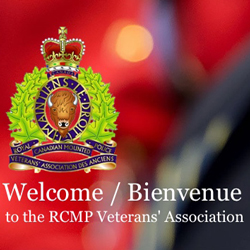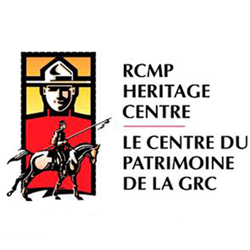Ric Hall’s Bits And Pieces Of Historical Interest

Veteran Ric Hall sent us the foreign information and photographs for your reading pleasure.
Found in box of old kit sent for destruction was a pair of khaki slip-ons for epaulettes with a crown and “RCMP” shoulder flash. They are different from anything I have ever seen. Now the question to be asked is “where would these have been used?”

My first thought perhaps they could have been used by the 1 Provost Company (RCMP) during WWII. Checking all available photographs of members serving in the 1 Provost Company (RCMP) there does not appear to be anything similar used by the members.

The members of 1 Provost Company in the fall of 1939 were authorized to wear RCMP insignia. They obtained a small red on black embroidered titles reading RCMP and brassards reading RCMP. But not with black background and yellow lettering reading RCMP like the shoulder patches on the mysterious epaulettes slip-ons.

My second guess was that members of the Force, starting in 1952 through to 1957, continued to be trained by the Canadian Army Provost Corps. Commissioner Nicholson, who was the Provost Marshall (Army) at the end of WWII, wanted volunteer RCMP members trained in Provost duties should there be a need for immediate mobilization.
Veteran Gordon Greig, Reg #18185/O.757, was one of the members who volunteered in 1956 to take the Provost training at CFB Shilo. I reached out to him to see if he remembered the epaulettes. He does not recall them, they are a different colour than the uniforms they wore back in 1956. Members taking the training wore the Canadian Army Battle Dress and Summer Dress. The only thing differentiating them from Canadian Army members was that they wore the Force badge on their beret and field cap.

Photograph of Gordon Grieg, upper right, and other during their provost training (Source of photo – Ric Hall’s Photo Collection).
I turned the investigation over to Inspector Dave Hall, who is much smarter than his father, and he eventually found a reference to the strange epaulettes in Veteran Don Klancher’s book “Insignia of the Canadian Mounted Police : 1873-1998”, page 163; “an unusual cloth shoulder badge was reported as a transition type, used for a brief period of time by former members of the British Columbia Provincial Police following the amalgamation of that organization with the RCMP on August 15, 195o. The small cloth badge with the embroidered letters RCMP in yellow thread on black background was sewn on a khaki-coloured cloth should strap. No documentation was located which provided any information on the badge and it remained open to speculation if in fact, such a badge was used.”
Another mystery that has been solved. Thank you Insp. Hall and Don Klancher!
A friend who is a police officer in Germany is a collector of police uniforms and he absolutely loves the RCMP. He will take all things pertaining to the Force. He recently contacted me about a flag he had acquired in trade for a German police hat from an American collector. The flag is a well worn Union Jack and has markings indicating it may have been once been the property of the RNWMP. It also was marked “P.S. Vidette”. He was asking if could actually have been used by the RNWMP.

The ideate on patrol in the Yukon – note the Union Jack flying. Photos from the Scarlet and Gold magazine.

A quick check revealed that the “S.S. Vidette” was acquired by the Force in 1902 for $3,000 and used during the summer. Patrols were made along the rivers and lakes by boat. The small steamboat “Patrol Ship Vidette” and motor vessels “Jessie” and “Tagish” were used along the Yukon, Stewart, and Pelly Rivers. These water vessels also carried civilian passengers and cargo as well as cargo for the posts. The “Vidette” was later transferred to Dept of the Interior.

My friend took the flag to his police labratory and they did tests on it and confirmed the age of the flag and the ink markings on it are consistent with the flags age.
The P.S. Vidette had a role in the death of a member whose name is forever etched on the RCMP Cenotaph at “Depot” Division. From Larry Burden’s “This Day in the RCMP.” Constable Michael James Fitzgerald, Reg # 3617, age 37, (# 40 on the RCMP Honour Roll) drowned August 27, 1913, in the White River, Yukon Territory while en route to a new posting near the Shushana Gold Fields.
It seems that fate had intended Constable Michael James Fitzgerald to meet his end by drowning. Twelve years before he escaped death when he and two others, Cst. Norman Malcolm Campbell, Reg # 2972 (#24 on the RCMP Honour Roll) and Cst. Spencer Gilbert Heathcote, Reg # 3463 (#25 on the RCMP Honour Roll) ended up in the Stikine River in Alaska. In that incident Fitzgerald was the sole survivor and his two mates drowned. Constable Fitzgerald was traveling up the White River aboard the steamer “Vidette” to his new posting when he offered to help the crew maneuver a barge the ship was pushing around a bend in the river. As he and the rest of the crew began pulling on a dragline that was attached to the barge, the nose of the craft became caught on some submerged brush and the “swing handle” on the line broke free and smacked Fitzgerald on his head. The force of the impact threw him overboard and into the water. As the crew scrambled to launch a boat and row out
to him, everyone aboard thought that he was ok, because he was swimming towards the boat. But then suddenly he threw his hands in the air and sank beneath the surface. The crew quickly recovered his body and took him ashore and attempted to revive him. The unconscious Constable Fitzgerald was bleeding from both of his ears and though they spent two hours attempting to revive him, he never regained consciousness. A later examination of his body determined that he had suffered a fracture at the base of the skull from the impact of the sweep handle.
If flags could talk! Imagine the adventures that took place for the men who worked in the Yukon and travelled under the flag of P.S. Vidette! And how did a RNWMP flag used while patrolling the rivers of the Yukon Territory in the early 1900s end up in the United States and get traded to a police officer in Germany?
Unfortunately I was unable to track down a photograph of the P.S. Vidette. I am still working on that!
My German friend seems to have the knack for acquiring some interesting pieces of RCMP history.
While travelling in Alaska in the 1970s he stopped in an “antique” store. His eye was taken by a poster of John “Duke” Wayne, when he asked “how much?” He was told it was part of a bundle. The bundle included a battered old map case, with a map inside, and a pair of handcuffs. They were all purchased $20.00. The map and case are dated 1875, London, and show part of eastern Canada and the United States. The map case although well worn has gilt edging and embossed lettering ” Presented to, Supt. A.G. Irvine, NWMP”. The handcuffs are stamped NWMP. Historical treasures and all for twenty bucks!
It would appear at one point this map case belonged to Acheson Gosford Irvine, Commissioner of the NWMP from November 1, 1880 to March 31, 1886.

Photograph of NWMP Commissioner Acheson Gosford Irvine.
Irvine was the first native-born Canadian to command the NWMP. After a career in the militia, he joined the NWMP and moved quickly from Superintendent to Assistant Commissioner before being appointed Commissioner. As Commissioner, Irvine increased the number of members from 300 to 1,000, raised the age of recruits, established a permanent headquarters at Regina, and created the training facility in Regina which remains the longest active division of the Force to this day.

The cartographer of the map was John Bartholomew, F.R.G.S. (Friend of the Royal Geographical Society). A Google search revealed that the Bartholomew family, for generations, were famous in the making of maps. Four generations of Bartholomew had the name of “John”.

Photograph of NWMP handcuffs (Source of photo – Ric Hall’s Photo Collection).
If you have any old photographs which you would like to share, please email Ric at rshall69@shaw.ca



 February 2, 2017
February 2, 2017 






